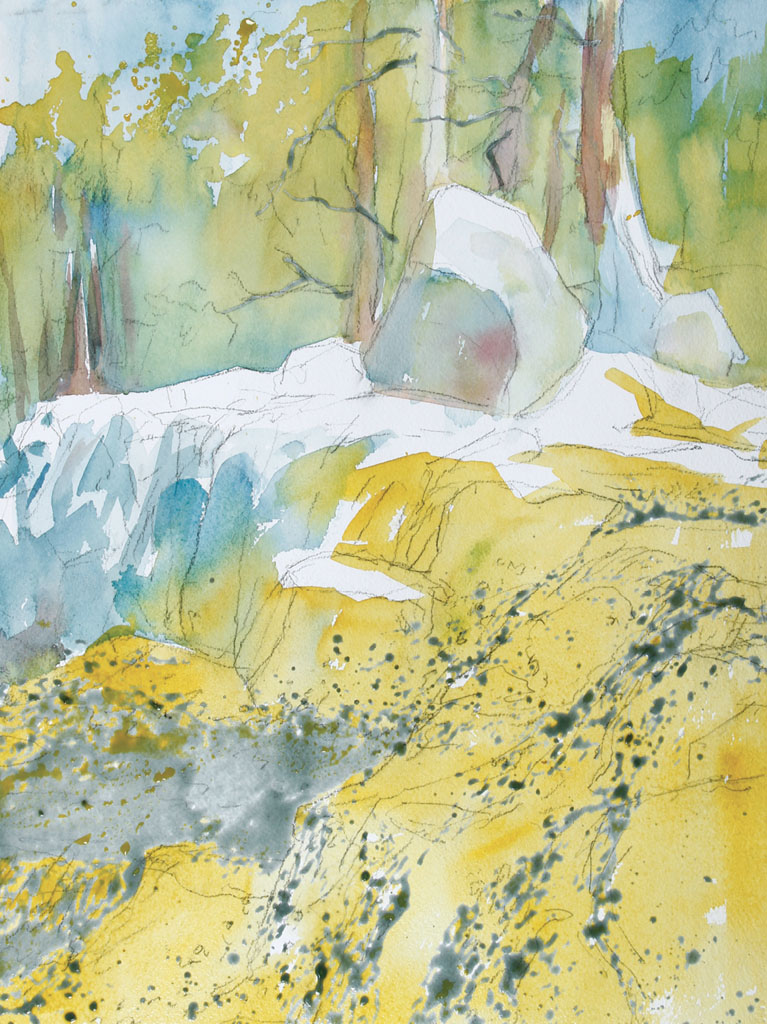
Mixing pigments on the palette then applying is a common watercolor technique, but can lead to muddy results when overmixed. By allowing the colors to mix directly on the paper you can create beautiful, unintentional results. Before pouring on pigment, it is helpful to mask out your main subjects for adding detail later. Let’s practice.


1 On 140-lb. (300gsm) cold-pressed watercolor paper, sketch the landscape with a no. 2 pencil. I moved the large tree at left closer to the big rock at the upper right for better composition. Use the wedge end of a 1⁄4-inch (6mm) brush to apply masking fluid for blocking water and a few branches.

2 After the masking fluid dries, use a 3⁄4-inch (19mm) brush to apply light to medium blue on the sky, trees and rocks.

3 Immediately use the same brush to apply yellow on the trees and rocks. It will mix with the blue to turn a nice yellowish green. Use a no. 4 round to paint the tree trunks at the top of the paper with a light to medium red. The red will mix with the blue and yellow to create a nice brown tone.

4 While the yellow waterfall area is still wet, use a 3⁄4-inch (19mm) brush to apply midtone to dark red followed by a midtone to dark blue. Allow them to mix together, creating beautiful rock colorations.

5 Using the same brush, tone down the reds to achieve darker rocks by adding a thick amount of blue pigment while the area is wet. Use a no. 8 round to apply a little more blue to the tree’s foliage, painting around the trunks.

6 Create a thick light-toned mixture of blue and red on your palette with a no. 4 round and paint the shaded sides of the upper rocks. Next render some texture on the falling water by using a no. 8 round and light blue followed by light red in a variety of strokes.

7 Use a no. 4 round and a similar blue and red mixture from step 6 to render details on the tree trunks and more shadows on the rocks. Add more yellow and blue to the distant trees. When dry, remove the masking by applying tape to it and carefully pulling it off the paper. Use the no. 8 round to apply light to medium blue shades to the water to indicate movement. In the foreground, add a little more red to the water to indicate the rocks’ reflection.